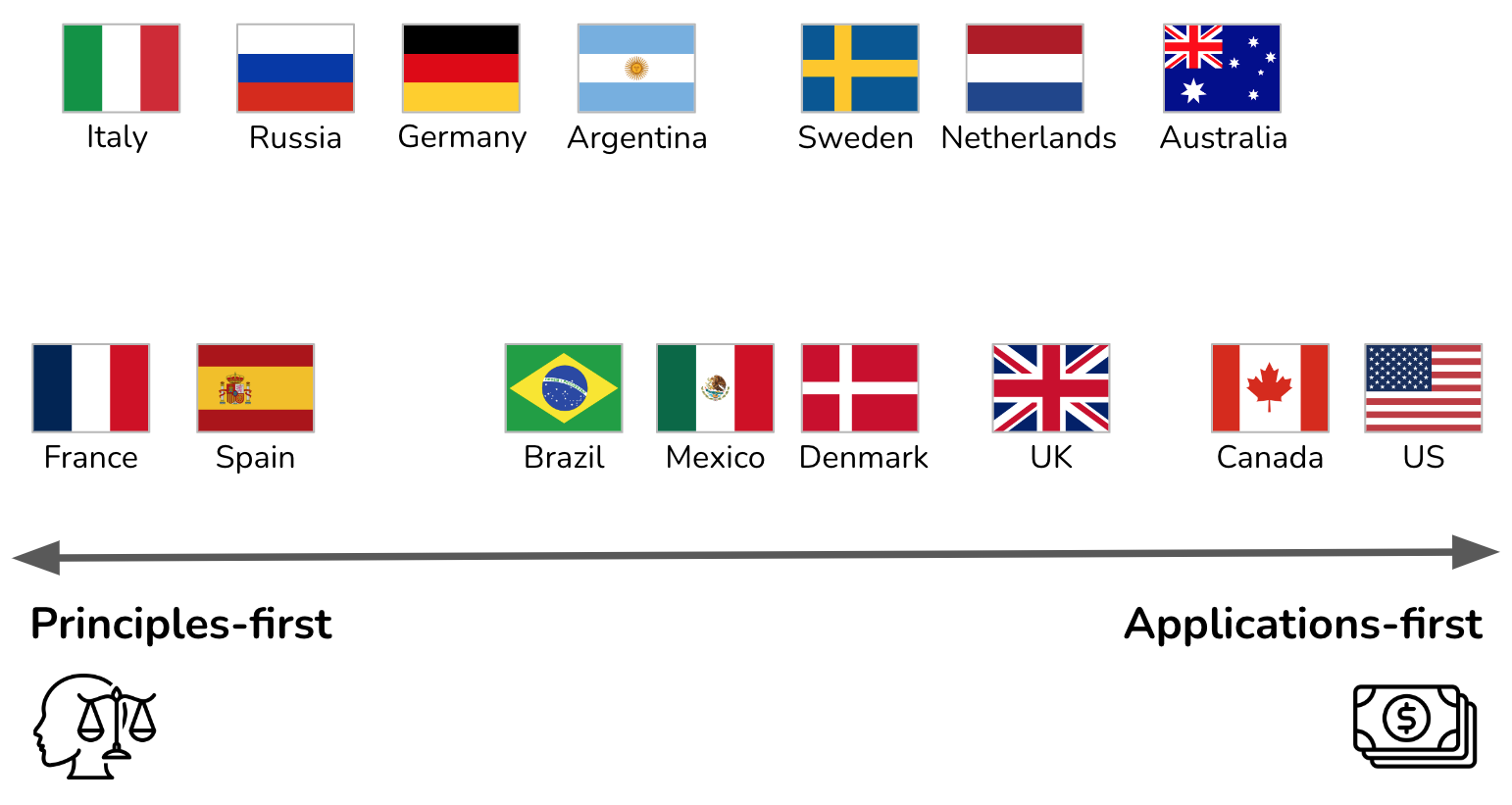Cultural Dimensions
PERSUADING
How Different Cultures persuade others

Managers and business people working internationally frequently need to persuade others about decisions and plans. How you influence others and the arguments people find convincing though are deeply rooted in culture’s philosophical, religious, and educational assumptions and attitudes.
Erin Meyer classified worldwide cultures according to whether they are principle-first or application first focused.
Key Characteristics
|
PRINCIPLES-FIRST |
APPLICATIONS-FIRST |
|
|

COUNTRY COMPARISON
The chart shows examples of where certain countries fall on the persuasion scale.
In the following video, you will see how culture impacts the way we reason and thus how we persuade other people. This dimension is specifically important to know about when giving presentations to an international or culture-specific audience.
HISTORICAL ROOTS OF THIS DIMENSION
Different cultures have different systems for learning, in part because of the philosophers who influenced the approach to intellectual life in general.
Although Aristotle, a Greek, is credited with articulating the applications-first thinking, it was British thinkers, including Francis Bacon in the 16th century who popularised these methodologies. Later, Americans with their pioneer mentality, came to be even more applications-first than the British.
By contrast, philosophy on the European continent has been largely driven by principles-first approaches. In the 17th century, Frenchman René Descartes spelled out a method of principles-first reasoning in which the scientist first formulates a hypothesis and then seeks evidence to prove or disprove it.
In the 19th century, the German Friedrich Hegel introduced the dialectic model of deduction, which reigns supreme in schools in Latin and Germanic countries. The Hegelian dialectic begins with a thesis, or foundational argument; this is opposed by an antithesis, or conflicting argument; and the two are then reconciled in a synthesis.

Source: Erin Meyer, The Culture Map
Get in Touch With Us

